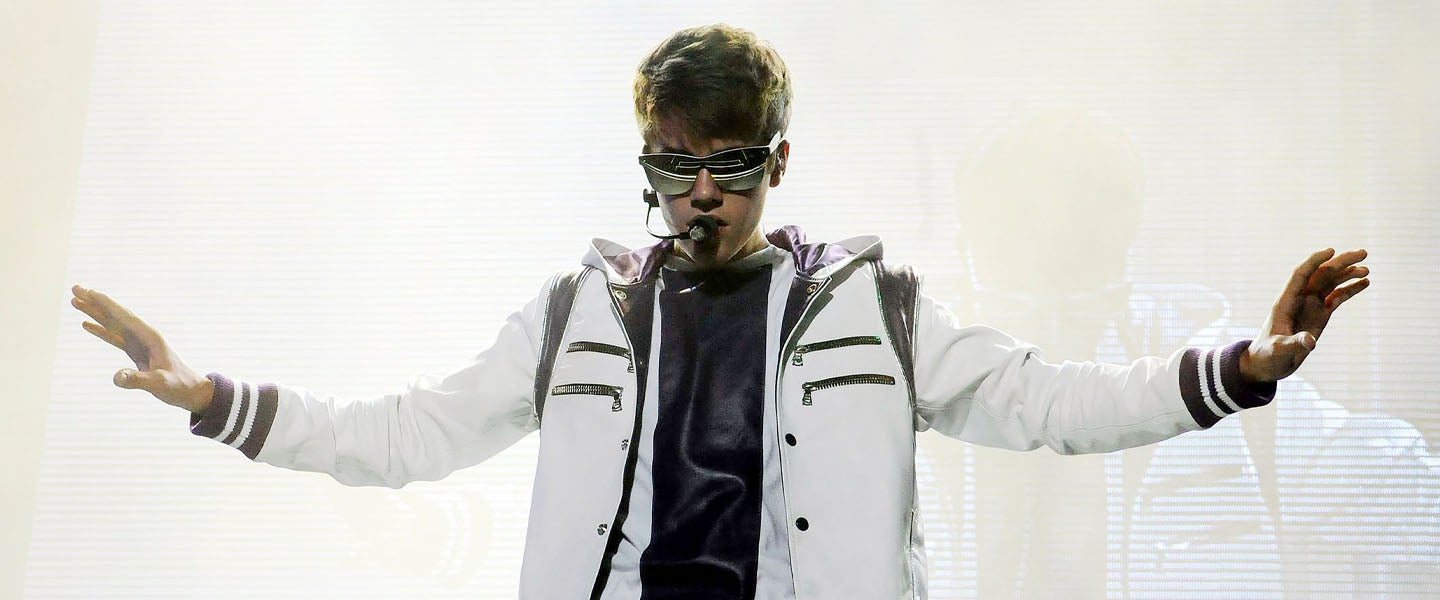Why is it that Shawn Mendes, the only person to perform twice at the 2019 MTV Video Music Awards, was the most forgettable celebrity at the show? Disney Channel legend Alyson Stoner made more of an impact in 30 seconds as she recreated the dance from Missy Elliott’s “Work It” video during a tribute to the MC, while RuPaul’s Drag Race alum Jade Jolie became Twitter’s latest darling simply because John Travolta mistook her for Taylor Swift.
FOREVER WORKING IT @AlysonStoner #VMAS pic.twitter.com/BOxYVJUbUg
— Video Music Awards (@vmas) August 27, 2019
John Travolta mistaking Jade Jolie for Taylor Swift. ?DRAG ?RACE ?EXCELLENCE pic.twitter.com/zVLgsbHhD7
— Joey Nolfi (@joeynolfi) August 27, 2019
Mendes, an objectively smoldering man with a penchant for tight white tank tops, slim black pants and slicked-back hair, delivered two perfunctory performances, including a duet with rumored girlfriend Camila Cabello that should have been steamy but just looked stiff.
nobody:
shawn mendes: pic.twitter.com/Zy00aVoWXA— Lewis (@lewisdandrews) August 27, 2019
#VMAs Red Carpet Report: Wake us up when Shawn Mendes wears something interestinghttps://t.co/0PGFPmrA4k
— Tom & Lorenzo (@tomandlorenzo) August 27, 2019
Shawn Mendes possesses the raw sexual energy of a church camp counselor
— Fiona Applebum Says Don't Give Shaun King Money!? (@WrittenByHanna) August 27, 2019
Through a process of elimination, Shawn Mendes has somehow become the top pop star of 2019. Justin Bieber relinquished his title after retreating from the spotlight to focus on his marriage and spirituality following 2015’s Purpose. Later that year, Entertainment Weekly decried “the slow, curious fade of the male pop star.” Several men went to bat for the position. Ed Sheeran achieved critical and chart success but lacked the heartthrob persona. Newcomers like Troye Sivan and Charlie Puth had the charisma and stage presence but not the chart-toppers. Of course, there’s Bruno Mars, but he’s stayed relatively quiet — aside from a few Cardi B and Ed Sheeran collabs — since his 2016 Album of the Year winner, 24K Magic. Mendes, then, may simply be the last man standing.
But the 2019 VMAs revealed a new contender: Lil Nas X, who rocked three distinct costumes (including an homage to OG Prince), showcased his skills as a prop comic (welcome to the stage, scroll meme!) and delivered the best male pop performance of the night (naturally, Lizzo had the biggest showstopper overall) with his new single, “Panini.” Gen Z’s cowboy prince is nipping at Mendes’ Chelsea-boot heels.
AYE PANINI✌️@lilnasx will forever be A LEGEND FOR THIS #VMA performance ?⚡️ pic.twitter.com/R4Edjpeum9
— Video Music Awards (@vmas) August 27, 2019
Pop’s New Cowboy
When Lil Nas X broke out in March with the multiplatinum single “Old Town Road,” he ushered in a new era of streaming (TikTok is taking over music) and chart performance (Nas set Billboard’s singles record with 17 weeks at No. 1). He made headlines again in June when he came out as gay. With his unique, colorful, charismatic, genre-defying and, yes, effeminate style, Lil Nas X is revitalizing the pop genre.
His VMA performance was also the 10th anniversary of Lady Gaga’s seminal appearance: 2009 was the year the Queen of Pop wore the infamous meat dress, performed a theatrical rendition of “Paparazzi” and set the tone of high-camp pop for the 2010s. Lil Nas X is, more than anyone, Gaga’s heir. He’s interpreting her playbook for the next decade.
“Pop music has always been a more feminine genre and has long had ties to queerness in music,” says Brittany Spanos, staff writer at Rolling Stone. From Elvis, Michael Jackson, George Michael, Justin Timberlake and Justin Bieber, pop has highlighted youthful, dancing stars, blurring the lines of pop, disco and dance genres.
lil prince x https://t.co/qnzI5ZlOh4
— nope (@LilNasX) August 27, 2019
When Mendes’ first album, 2015’s Handwritten, debuted at No. 1, he seemed like the natural successor to Bieber: emotive yet straight, boyish yet sexy. However, unlike Bieber, he didn’t dance or wear colorful outfits. In his image and his music, he continued to play it safe, adhering to a classic, inoffensive singer-songwriter style. (Can you name more than one of Mendes’ songs? He has over 50.)
Artists that blur genres — like Drake, Khalid and Kanye West — aren’t often considered pop stars, even if they’re pushing the genre forward with innovative style. “Pop is tied to whiteness in a lot of ways, even though the genre hasn’t always been tied to that,” Spanos says, pointing out that Michael Jackson brought disco to pop as Prince did with rock. Despite the genre’s history, “the definition of a male pop star hasn’t changed in the way we let female pop stars evolve.”
Taylor Swift successfully transitioned from country to pop while Billie Eilish merges alt-rock and pop into something there’s really no name for yet (electro-industrial pop?). And, of course, Lizzo — a trained flautist — is encouraging the world to love themselves through funk, rap and even classical music.
That’s what Lil Nas X is doing now with country and hip-hop. His VMA performance was part rap, part dance, part pop and fully Lil Nas X. “A lot of artists don’t really want to be tied to one genre anymore, and Lil Nas X is a galaxy brain version of that,” Spanos says. (Literally, his performance was set in 2079.)
Twitter’s Darlings
Part of Lil Nas X’s success is his ability to capture both mainstream and extremely online audiences. As streaming democratizes who gets to be a star, many artists can bult cult followings without ever leaving the confines of stan Twitter.
Edrick Leong, a 22-year-old who works for an NYC nonprofit, moderates the subreddit r/Popheads. The forum was created in 2015 as a place to discuss “the people’s pop star” Carly Rae Jepsen and her critically acclaimed album Emotion after her fans were barred from r/Indieheads.
Popheads now boasts over 100,000 members. The community dissects everything from Taylor Swift’s new album, Lover, to a retrospective on Janet Jackson’s 1989 album Rhythm Nation 1814. However, its predominantly LGBTQ crowd — many of whom are also Twitter stans — rarely discusses male pop artists.
“Ed Sheeran, Shawn Mendes, Khalid — they’re all doing just as [well] as the female pop stars,” Leong says. But he believes their audiences likely run more straight and mainstream than Popheads members. “I don’t think many male pop artists have that core stan-Twitter fanbase.”
These large fandoms allow artists like Jepsen to succeed without topping charts. Her most successful album, 2012’s Kiss, featuring the single “Call Me Maybe,” hit No. 6 on the Billboard 200. However, her two follow-up albums, Emotion and Dedicated, were more critically acclaimed and beloved among her fans, but they didn’t crack the Top 10.
“Carly Rae Jepsen, to most of America, is by no means a pop star. She’s a has-been. She’s a one-hit wonder. She’s forgotten,” Forbes music journalist Hugh McIntyre tells MEL. The same goes for Charli XCX, who has remained a Popheads staple while rarely charting well. “She does not have the numbers to back that up,” McIntyre says.
Charts and sales may no longer be reliable barometers of success for fans, but they remain the music business’ trusted metrics. It’s why the prevalence of album bundles — throwing in an album download with ticket purchases to boost record sales — is heavily scrutinized. It’s also why Lil Nas X — who manages to excel on the charts and live so comfortably online with a relatable I’m-just-another-teen attitude — is so revolutionary for the male pop genre.
Still, Nas’ longevity remains a question mark. “He has a huge hit but really only one or two successful songs,” McIntyre says. “So is he a pop star by that? Kind of. He’s really a pop star because I can’t stop looking at him. I can’t stop talking about him.”
The Next Wave of Male Pop
While Lil Nas X is revolutionary, he’s not the only male star offering a new perspective on male pop. Most other pop influencers just happen to live outside America. BTS with K-pop and Bad Bunny with Latin trap are bringing their signature sounds and fashions to U.S. audiences. Even new tracks by Aussie Troye Sivan and the U.K.’s Sam Smith offer something beyond the guitar-playing singer-songwriter aesthetic without drawing too much from the Justin Bieber well.
And, importantly, the formula is beginning to work. The elusive Troye Sivan, who started his career as a YouTuber, is gaining steam on tour and online. BTS is nothing short of a phenomenon: They’re the first K-pop group to top the Billboard 200, hitting the top spot three times in 12 months. “BTS does tend to have very poppy choruses that aren’t necessarily American pop star choruses,” Leong says. “The diversity of the group, there’s some appeal to that as well.”
The new class of male pop stars have the fans and the charisma. Some have the numbers; others are still waiting for their turn. But what combination makes a pop star in 2019? “Pop has always just meant popular and was tied to a sound later on,” says Rolling Stone‘s Spanos. If artists aren’t making “what our ears want to tell us is a pop song,” she says, who cares?
The male pop star hasn’t gone away. We’ve just forgotten what makes him pop.

